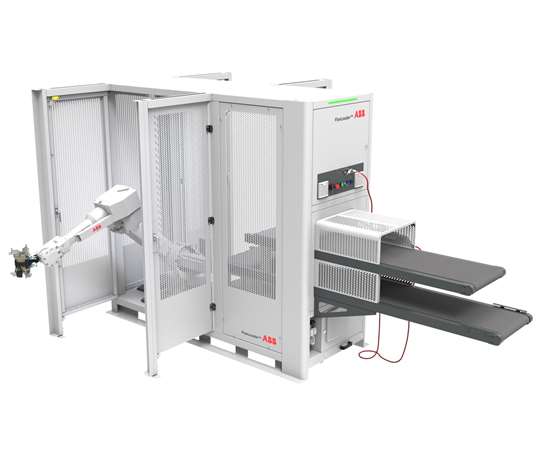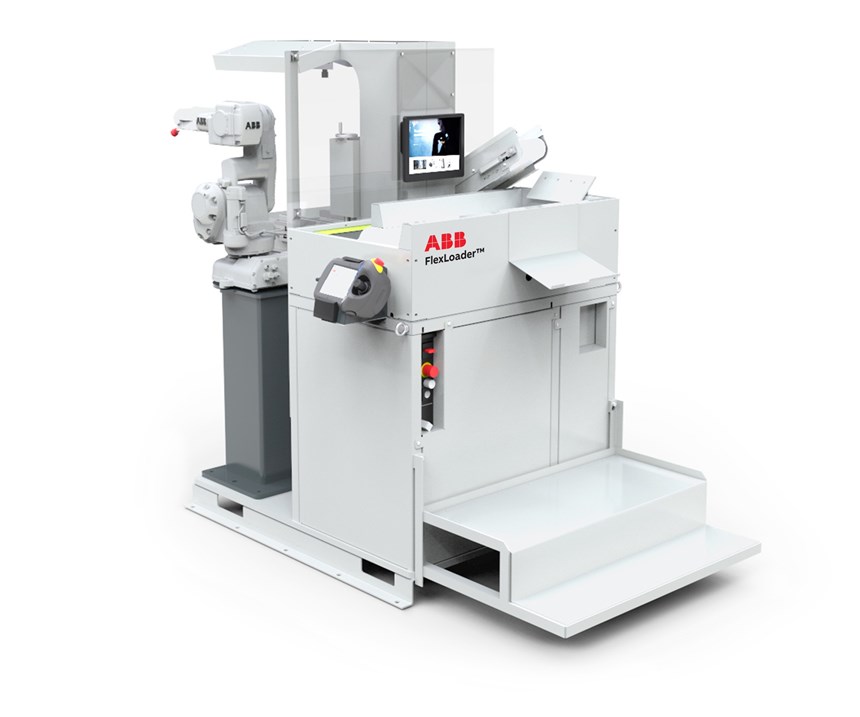ABB Robots Help Shops Meet Production Challenges
Appears in Print as: 'Robots Help Meet Production Challenges'
The robots are ideal for both low- and high-volume production, tending vertical lathes, horizontal and vertical machining centers, five-axis machines, and grinders.
#horizontal-and-vertical-lathes
With more efficient and advanced machine tools entering the market, the demand for more intelligent and flexible robotic automation for machining applications is increasing. Coupled with the progressing shift from mass production to mass customization, the need to efficiently serve individual customer preferences is a primary concern of machine shops and manufacturers.
FlexLoaders, ABB Inc.’s standardized machine tool tending cells, include a six-axis robot ideally suited to the reach and payload requirements of the specific application, according to the company. Vision guidance provides the flexibility to automate the machine tending of parts that range from small to very large, increasing machine tool utilization by as much as 60 percent. The robots are ideal for both low- and high-volume production, tending vertical lathes, horizontal and vertical machining centers, five-axis machines and grinders.
The company’s first offerings under this approach include a new single-arm YuMi robot and OmniCore. Both feature high flexibility to add collaborative applications to existing lines with confined spaces—from compact footprints and multiple mounting possibilities to full integration as part of the digital factory. ABB Ability and Connected Services are both built into the new controller, as well as the SafeMove2 safety software solution, which can convert any connected industrial robot into a collaborative one, the company says. In addition, the company also introduced its RobotStudio virtual commissioning and simulation software that enables teams to collaborate and efficiently design automation systems with a 3D perspective.
RELATED CONTENT
-
Making Waves with Lathe Automation
After years of relying on an extensive machining cell for part production, this marine equipment manufacturer has now reduced part handling and improved quality through use of single-setup lathes and automated loading and unloading.
-
What Is The Best Bar Feed System For Production Turning?
Selecting the right bar feeder can be one of the most important decisions a shop can make. Bar feed systems help improve productivity, throughput and quality, but in order to achieve the most benefit from them it is essential that a bar feed system be matched to the particular needs of the turning operation.
-
Automation in High-Mix, Low-Volume Turning Applications
Turning shops are familiar with automation for high-volume work, but the shifting landscape to smaller batch sizes has created new challenges.






